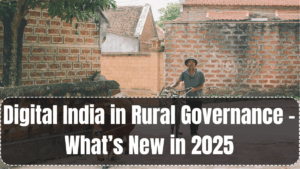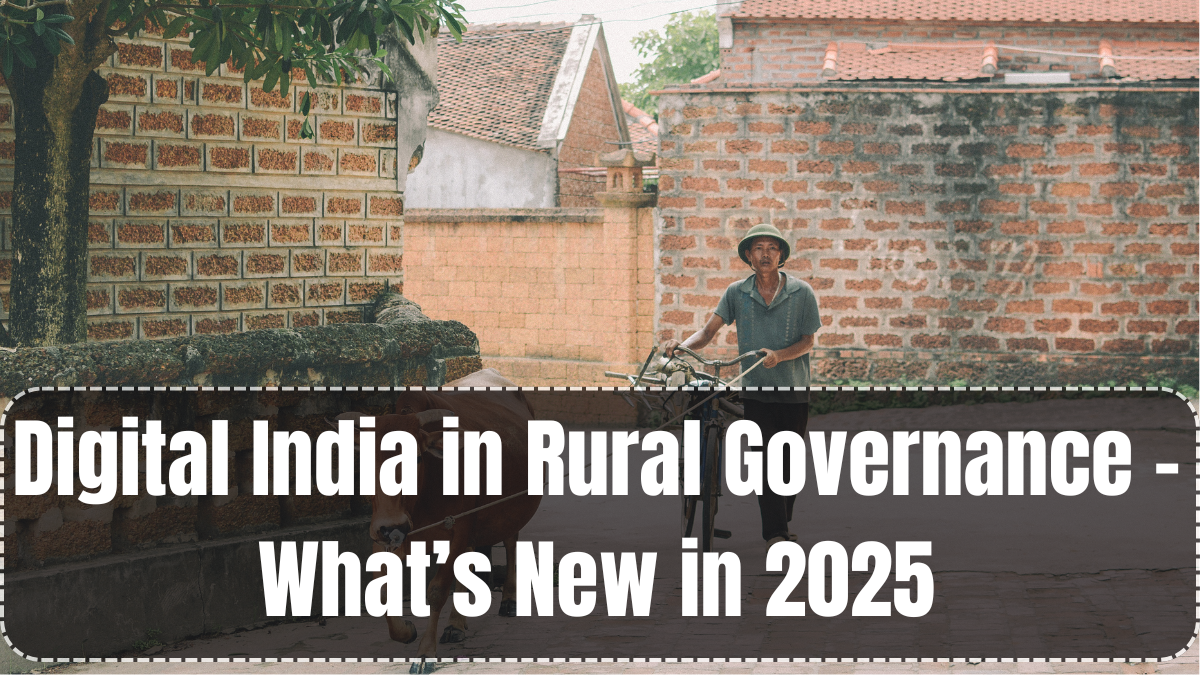The year 2025 marks a significant leap in the transformation of Digital India Rural governance. With new technologies being integrated into Gram Panchayat administration, villagers across the country are experiencing quicker, more transparent, and citizen-friendly governance. What once required paperwork, long queues, and multiple office visits can now be accessed from a smartphone or a nearby Common Service Centre (CSC).
Driven by the Ministry of Panchayati Raj and supported by flagship missions like BharatNet and Digital Seva Kendras, rural India is now part of a unified digital ecosystem. These changes not only improve service delivery but also bridge the digital divide between urban and rural citizens.

Key Digital Tools Introduced in 2025
Several new tools and platforms have been launched in 2025 to strengthen Digital India Rural governance:
-
Gram Darpan Portal: A one-stop platform for checking panchayat schemes, birth/death certificates, and employment records.
-
e-GramSwaraj 2.0: Upgraded version of the Panchayat accounting system offering real-time budget, fund usage, and audit data accessible to villagers.
-
Jan Samvad App: Enables rural citizens to file complaints, request services, and track grievances in real-time with Panchayat officers.
-
Voice-Enabled Kiosks: Installed in remote areas allowing illiterate citizens to access services using voice commands in regional languages.
These tools are designed for inclusivity, supporting local dialects and low-bandwidth operations to function smoothly in remote villages.
How Panchayats Are Going Digital
In 2025, nearly every Gram Panchayat has access to high-speed internet and basic digital infrastructure. Here’s how Panchayats are utilizing the digital shift:
-
Online Property Tax Collection
Property tax is now collected digitally using mobile UPI apps, with receipts generated instantly. -
Digitized Land Records
Villagers can now verify ownership records and mutation status via the Dharani portal or BhuNaksha maps integrated with Panchayat records. -
Birth/Death Registrations
What once took weeks is now done within 48 hours through Aadhaar-linked data and e-certificates. -
Public Scheme Tracking
NREGA, pension, and ration benefits can be checked through SMS alerts or CSC logins.
This transformation reduces delays, corruption, and bureaucratic hurdles while giving villagers direct access to their rights.
Capacity Building and Digital Literacy
An important part of Digital India Rural governance is empowering rural citizens and officials to use digital tools confidently. In 2025:
-
Over 3 lakh Panchayat officials have been trained under the e-Panchayat Swayam Program.
-
School children are taught to assist elders in accessing mobile-based governance services as part of community service initiatives.
-
Digital literacy camps are regularly held in partnership with NGOs and women’s self-help groups (SHGs) to ensure no one is left behind.
Women, elderly, and marginalized communities are at the center of these training drives, ensuring universal participation.
Data-Driven Decision Making
A notable change in rural governance is the shift towards data-backed planning. Panchayats now make development plans using:
-
GIS-based resource mapping
-
Household-level digital surveys
-
Real-time scheme dashboards
This has led to better targeting of beneficiaries, proper utilization of grants, and timely execution of projects—especially in sanitation, irrigation, and rural housing sectors.
Success Stories Across States
Some notable implementations of Digital India Rural governance in 2025 include:
-
Madhya Pradesh’s Smart Panchayat Model: Every Panchayat office is equipped with smart TVs showing scheme progress, financial records, and feedback dashboards.
-
Kerala’s Online Grama Sabha: Villagers can join monthly Grama Sabha meetings via WhatsApp video or Zoom from their homes.
-
Jharkhand’s Digital Gram Mitra Program: Local youth trained as “digital assistants” help villagers access documents, apply for benefits, and update Aadhaar.
These examples showcase how digital tools are improving trust, transparency, and efficiency in grassroots governance.
FAQs
What is the Digital India Rural initiative?
It is a government program aimed at digitizing services and improving governance in villages using technology like apps, portals, and online databases.
How can villagers use these services if they don’t have smartphones?
Villagers can visit local Common Service Centres (CSCs) or use voice-enabled kiosks installed in remote Panchayats to access digital services.
What is the role of Gram Panchayats in Digital India 2025?
Panchayats act as local administrative hubs where records, certificates, schemes, and payments are managed digitally for villagers.
How is transparency improved through digital governance?
Tools like e-GramSwaraj, Jan Samvad, and Gram Darpan provide real-time access to funds, schemes, and complaint resolution, reducing the scope for corruption.
Are there training programs for villagers to learn digital tools?
Yes, digital literacy camps and government-led training programs are held regularly to ensure villagers and Panchayat officers know how to use digital platforms.
Click here to know more.
